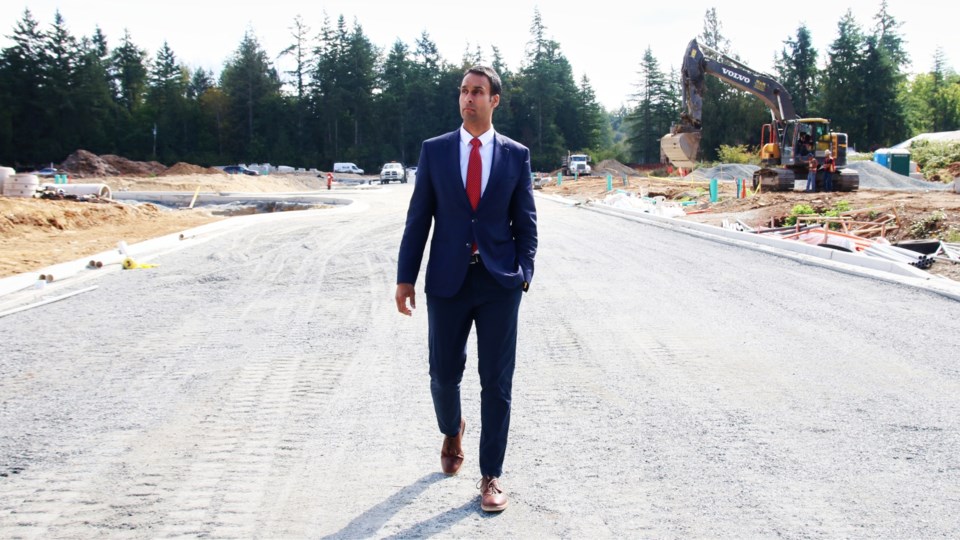World
Demand for Residential Land Dips as Market Faces Uncertainty

The demand for residential land in Western Canada is experiencing a significant decline, largely influenced by ongoing macroeconomic uncertainties. Despite various local, provincial, and federal policies aimed at stimulating new residential construction, the reality on the ground is markedly different, according to industry experts. Multi-family broker Mark Goodman of Goodman Commercial Inc. in Vancouver highlights a growing inventory of listings that has shifted the balance in favor of buyers, resulting in downward pressure on prices.
Goodman notes that the Metro Vancouver real estate market has undergone a “monumental reset.” He indicates that properties are now often listed at prices 25 to 30 percent lower than those seen two to three years ago, yet buyer activity remains minimal. “It’s crickets,” he states, emphasizing the stark contrast to the market’s previous vibrancy.
Data from Altus Group reveals that only 59 residential land sales occurred in Metro Vancouver during the first half of 2025, a sharp decrease from 294 sales throughout the entire previous year. Goodman describes the current state of the land market as “crushed,” noting that prices for buildable land have plummeted from around $200 per foot to less than $100 per foot.
Challenges in Development and Approval Processes
The Broadway area, which encompasses a 500-block region between 1st and 16th avenues and is surrounded by Vine Street and Clark Drive, has 121 residential projects in the pipeline, representing a total of 23,857 housing units. Yet, the realization of these projects is hampered by a lack of building permits, with only four issued in the past three years. Goodman estimates that approximately 85 percent of developments in this area will face significant delays.
The uncertainty surrounding municipal approval processes is further complicating matters. Joe Varing, principal of Varing Marketing Group at Homelife Advantage Realty (Central Valley) Ltd. in Langley, points out that both developers and potential buyers are hesitant to commit. “If I don’t know if my job is going to be around in 18 months, am I going to buy a $2 million house?” he asked, highlighting the broader economic concerns affecting consumer confidence.
Varing estimates that transactions have decreased by 90 percent compared to three years ago, a sentiment echoed in data from Altus Group. Despite this downturn, entitled sites, particularly those designated for four- and six-plex developments, are experiencing some movement. These properties offer a quicker path to construction without the need for rezoning, making them more attractive to developers.
Market Dynamics and Regional Comparisons
As holding costs continue to rise—estimated at eight to ten percent annually—Varing cautions that the need for rezoning has become a significant barrier. Developers now face a pro forma that must account for multiple years of carrying costs, complicating project feasibility. “All the land that requires rezoning into condos and townhomes is now challenged,” he noted.
Despite the challenges, opportunities remain for buyers willing to navigate the current landscape carefully. Jag Cheema, a commercial agent with Royal LePage Wolstencroft Realty in Mission, emphasizes the importance of well-priced and properly zoned properties. He recently listed a parcel in the Cedar Valley area that could yield 16 single-family lots, reflecting current market trends. The asking price of just under $4 million suggests a long-term hold, potentially spanning five to ten years.
Cheema advocates for strategies that maximize the potential of smaller properties. “You could have a permit within a year,” he said, suggesting a focus on subdividing lots for higher-density developments.
In contrast, the job market in Alberta appears more resilient, according to Harvey Russell of NAI Commercial in Calgary. He reports a high level of interest from British Columbia, where investors are turning their attention. “People are coming here, capital’s coming here,” Russell noted, indicating a notable shift in investment trends.
Although Alberta’s market is not as robust as it was in 2022, it remains stable. Russell completed $380 million in deals last year, including a significant sale of a site designated for a million square feet of development. Despite a tightening in financing options, he remarked that Calgary’s housing market has historically adapted well to fluctuations in supply and demand.
The ongoing abundance of listings, coupled with price reductions, presents a unique opportunity for builder-developers and owner-investors. “New money can enter into the market,” Varing concluded, suggesting that now may be an advantageous time to engage in real estate transactions.
-

 Science2 months ago
Science2 months agoToyoake City Proposes Daily Two-Hour Smartphone Use Limit
-

 Health2 months ago
Health2 months agoB.C. Review Reveals Urgent Need for Rare-Disease Drug Reforms
-

 Top Stories2 months ago
Top Stories2 months agoPedestrian Fatally Injured in Esquimalt Collision on August 14
-

 Technology2 months ago
Technology2 months agoDark Adventure Game “Bye Sweet Carole” Set for October Release
-

 World2 months ago
World2 months agoJimmy Lai’s Defense Challenges Charges Under National Security Law
-

 Technology2 months ago
Technology2 months agoKonami Revives Iconic Metal Gear Solid Delta Ahead of Release
-

 Technology2 months ago
Technology2 months agoSnapmaker U1 Color 3D Printer Redefines Speed and Sustainability
-

 Technology2 months ago
Technology2 months agoAION Folding Knife: Redefining EDC Design with Premium Materials
-

 Business2 months ago
Business2 months agoGordon Murray Automotive Unveils S1 LM and Le Mans GTR at Monterey
-

 Technology2 months ago
Technology2 months agoSolve Today’s Wordle Challenge: Hints and Answer for August 19
-

 Lifestyle2 months ago
Lifestyle2 months agoVictoria’s Pop-Up Shop Shines Light on B.C.’s Wolf Cull
-

 Technology2 months ago
Technology2 months agoApple Expands Self-Service Repair Program to Canada









